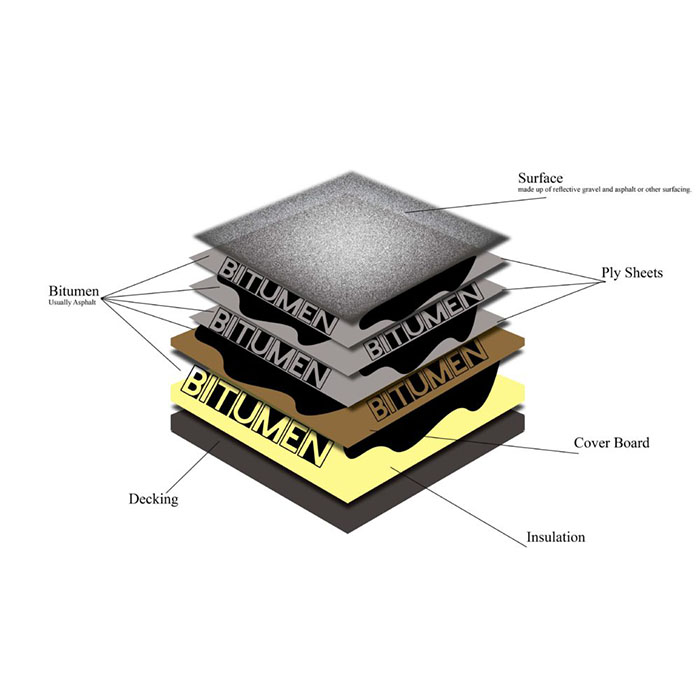Built-Up Roofing (BUR) Membrane: A Comprehensive Guide
Built-Up Roofing (BUR) systems have long been a staple in the commercial roofing industry in the United States. With their robust construction, proven performance, and adaptability to different climates and building designs, BUR systems continue to be a popular choice.
Description and Key Features
Built-Up Roofing, aptly named due to its method of construction, consists of multiple layers of bitumen and reinforcing fabrics that create a finished membrane. Traditionally, it's known as "tar and gravel" roofing. The key features of BUR include its multi-layered design, which offers enhanced protection, and its smooth or gravel-surface finish that provides additional durability and resistance against the elements.
Composition
The composition of a BUR system typically involves three main components: bitumen (asphalt or coal tar), ply sheets (reinforcing fabrics like fiberglass or organic mats), and surfacing material (often gravel, mineral granules, or a reflective coating). The bitumen serves as the adhesive and waterproofing agent, the ply sheets provide strength and stability, and the surfacing material protects the roof from sunlight and weather.
Benefits
BUR systems offer several benefits. Their multi-layered structure provides excellent waterproofing capabilities. They also offer good tensile strength and are resistant to thermal shock. BUR is known for its proven track record of durability, often lasting over 20 years with proper maintenance.
Climate Considerations
BUR roofing is particularly well-suited for regions with variable weather conditions. Its layered structure can withstand heavy rain, high winds, and even moderate snow loads. However, in extremely hot climates, the bitumen can soften, and in very cold temperatures, it can become brittle. Therefore, the choice of bitumen type and the addition of reflective coatings or gravel can be critical in these environments.
Building Design and Purpose
BUR systems are versatile and can be applied to a variety of building designs, especially flat or low-slope roofs typical in commercial buildings. They are ideal for larger roofs where the installation of multiple layers is feasible, and the building can support the weight of the BUR system.
Advantages and Disadvantages
The advantages of BUR include its durability, waterproofing ability, and resistance to foot traffic. However, it has some drawbacks, such as the potential for a longer installation process and the requirement for a robust structural support due to its weight. Additionally, the installation process can be messy and emit fumes.
Cost and Longevity
The initial cost of a BUR system can be higher than some other roofing types due to the labor-intensive installation process and materials used. However, its longevity and low maintenance requirements can make it a cost-effective option in the long run.
Popular Brands: CertainTeed and Tamko
CertainTeed and Tamko are two well-known brands in the BUR market. CertainTeed is renowned for its high-quality roofing materials and offers a range of BUR products that cater to different needs and budgets. Their BUR systems are known for their reliability and are backed by comprehensive warranties.
Tamko, on the other hand, has carved out a niche in the roofing industry with its innovative and durable BUR products. Tamko’s BUR solutions are designed for ease of application and long-term performance, making them a popular choice for commercial roofing contractors.
Maintenance Requirements
Regular maintenance is key to extending the life of a BUR roof. This includes routine inspections, cleaning to remove debris, and checking for signs of wear or damage. Repairs should be addressed promptly to prevent water infiltration and further damage.

